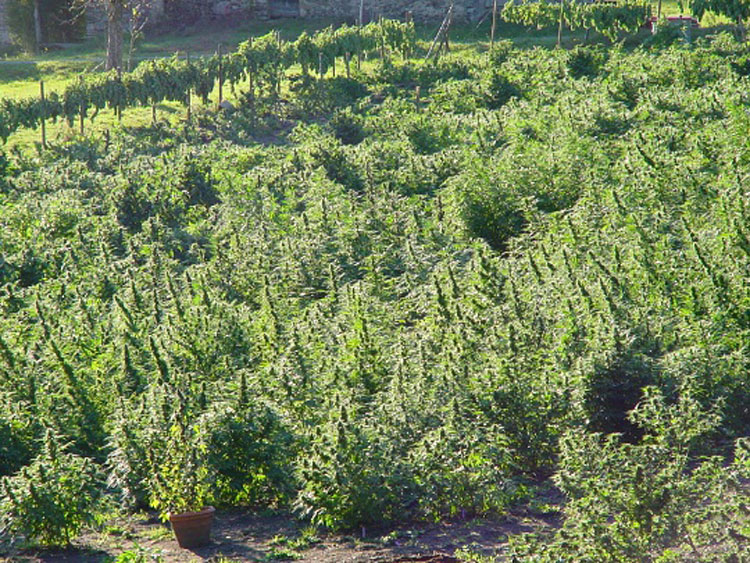By Zach Friend, County Supervisor 2nd District
 Over the last four years the Board of Supervisors has been working on policies around the dispensing and cultivation of medical cannabis. While work around cannabis in general will be evolving for quite some time, the Board is much closer to a final cultivation ordinance than we have been in some time.
Over the last four years the Board of Supervisors has been working on policies around the dispensing and cultivation of medical cannabis. While work around cannabis in general will be evolving for quite some time, the Board is much closer to a final cultivation ordinance than we have been in some time.
Creating a framework for medicinal sales through local dispensaries was the first thing addressed by ordinance a few years ago. While there have been updates to that ordinance, overall the framework for medicinal sales has been established.
Creating a framework for commercial cultivation — both on the medicinal side and now, through state law change, the recreational side, has proved more difficult.
Lots of questions on the environmental, procedural and social elements of creating a new formal commercial cultivation process have been raised. I’ve had numerous community and neighborhood discussions on this issue and heard similar issues during these meetings.
- How will enforcement be done on those violating the ordinance?
- Will rural neighborhoods and character be preserved?
- Shouldn’t this be grown in areas zoned for commercial activity, such as commercial agricultural or manufacturing/commercial districts?
- Will the regulations the Board is considering be too onerous and drive people back into the black market?
- What are the traffic, noise, smell and water impacts?
- How are fire risks mitigated?
- How much should be grown per parcel and what is a fair minimum parcel size?
And much more.
These aren’t easy questions to address. During this multi-year process the Board has maintained three overarching objectives: 1) Protect neighborhoods 2) Protect the environment 3) Provide enough cannabis to meet the medicinal needs of local residents.
The Board will be considering a draft ordinance that governs these activities in late April and into early May. What are the key elements of the ordinance?
After two extensive Planning Commission hearings and a special meeting at the Board of Supervisors a draft framework has emerged with the following components (the entire ordinance can be found on the County’s website).
Setbacks: One of the most common complaints regarding commercial cultivation deals with odors and concerns about setbacks from habitable structures. The Board has included 400 foot minimum setbacks from adjoining habitable structures.
Minimum Parcel Sizes: Ensuring that commercial cultivation occurs in the properly zoned locations is key. The Board limited the zoning types that can even be considered for commercial cultivation (ensuring it won’t occur in residential neighborhoods for example) and also established minimal parcel sizes on other zones.
Coastal Zone Protections: Protecting coastal resources and character are important. The Board put additional restrictions on cultivation within the Coastal Zone plus a one mile buffer. For commercial agricultural parcels, for example, no new greenhouse or hoop house construction could occur. This prevents new construction from occurring in this sensitive area.
Timber Zones: Significant concerns have been expressed regarding the impact to watersheds, wildlife and timber resources resulting from allowing commercial cannabis operations on timber zoned properties. Proposed regulations note that only sites with existing cannabis cultivation operations or pre-existing non- cannabis commercial uses would be eligible for licensing and permits, greatly reducing the possibility of expansion into timber areas.
Riparian Protections: The proposed ordinance include required setbacks to perennial, intermittent and ephemeral streams. Additionally, it strengthens riparian protection by prohibiting any exceptions to the required setbacks for purposes of allowing commercial cannabis activities.
Cottage (Smaller) Cultivation: There has been some concern that the new regulations will make it difficult for smaller cultivators to continue to exist (or drive them back into the black market) The Board has proposed an option for small (500 maximum square foot) commercial grows on limited zones for long-term existing growers without any complaints against them. With a minimum parcel size of 2.5 acres, these limited grows provide options to bring some of these growers into the regulated market.
Enforcement and Inspections: Robust enforcement is an important element of having successful regulations. Along with an annual renewal process, site inspections at the time of application as well as regular inspections of the site at least once every three years are built into the proposed ordinance. A team that includes code compliance, environmental planning specialists, the Sheriff’s Office and more are part of the enforcement team.
The above are just a handful of the many elements of the new regulations. State regulations continue to evolve and local regulations will also need to be monitored to ensure they are meeting local environmental needs and the needs of the community overall. As always, I appreciate your feedback.
•••
If you have any additional questions, please do feel free to contact me at 454-2200.



